1. This rule was designed for Civil Engineers and includes scales
for stadia calculations, curve setting and hydraulics.
2. Stadia surveying uses a special theodolite which has a pair of horizontal hair lines;
it is used with a surveying rod with distances marked on, in the past in feet and tenths
of a foot, more commonly now in metres and decimal fractions of a metre. From the distance
seen on the rod between the hairlines it is possible to calculate the distance from the
instrument to the rod. These assume that the line of sight is horizontal, where it is not,
calculations have to be carried out to calculate the true horizontal distance. The
"stadia" scales include SinCos scales and Cos2 scales designed for
these calculations. There are two SinCos scales, the first going from 35' to 5° 50' and
the second from 5° 45' to 45°. The start of the scales can be seen on the image of the
back left. Values of the angle are read on the special scales and the value of the
function on the D scale. The Cos2 scales run from 45° to zero and can be
seen on the back right of the rule. As with the SinCos scales, the angle is read on the
special scale and the value of the function on the D scale. There is a good description of
the formulae for stadia surveying at http://www.tpub.com/inteng/8.htm.
The word stadia comes from an ancient Greek measure of distance.
3. Setting out curves is a standard problem in, for example, roadway construction. The
diagram below shows how the scales for curve setting are used. CL is the Curve Length, TL
is the Tangent Length and SL is the external Secant Length. The rule is also used for
refining intermediate points. This is done using the M scales with the R (square), S (sin)
and D scale.
4. On the front the rule has an F (fourth power) scale. This is used with the square and
cube scales for calculations using Manning's formula for flow in open channels:
v = R2/3 I1/2 / n
where:
v = velocity (m/s)
R = hydraulic radius (wetted perimeter / sectional area)
I = gradient
n = Manning's (Kutter's) coefficient of roughness.

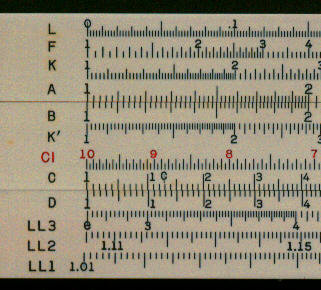
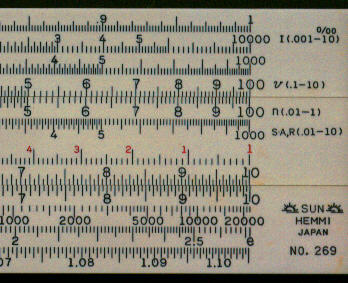

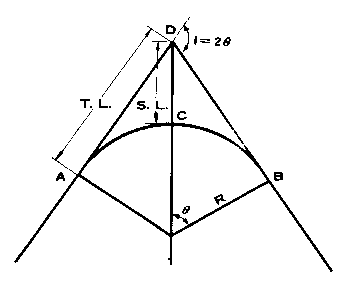
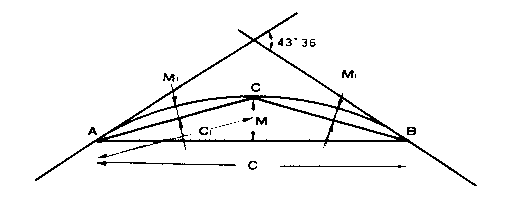
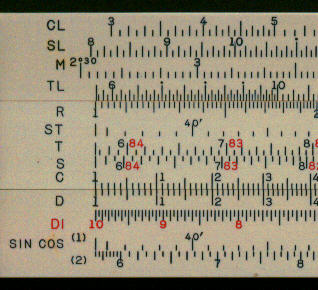
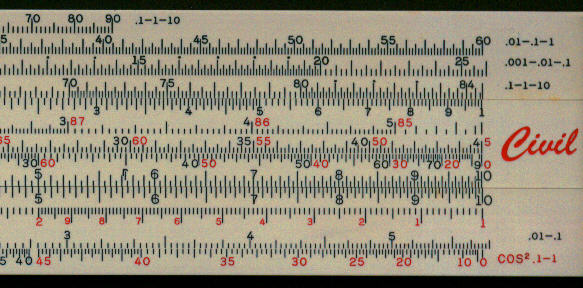
CL, SL, M, TL [R, ST, T, S, C] DI, sincos, cos2